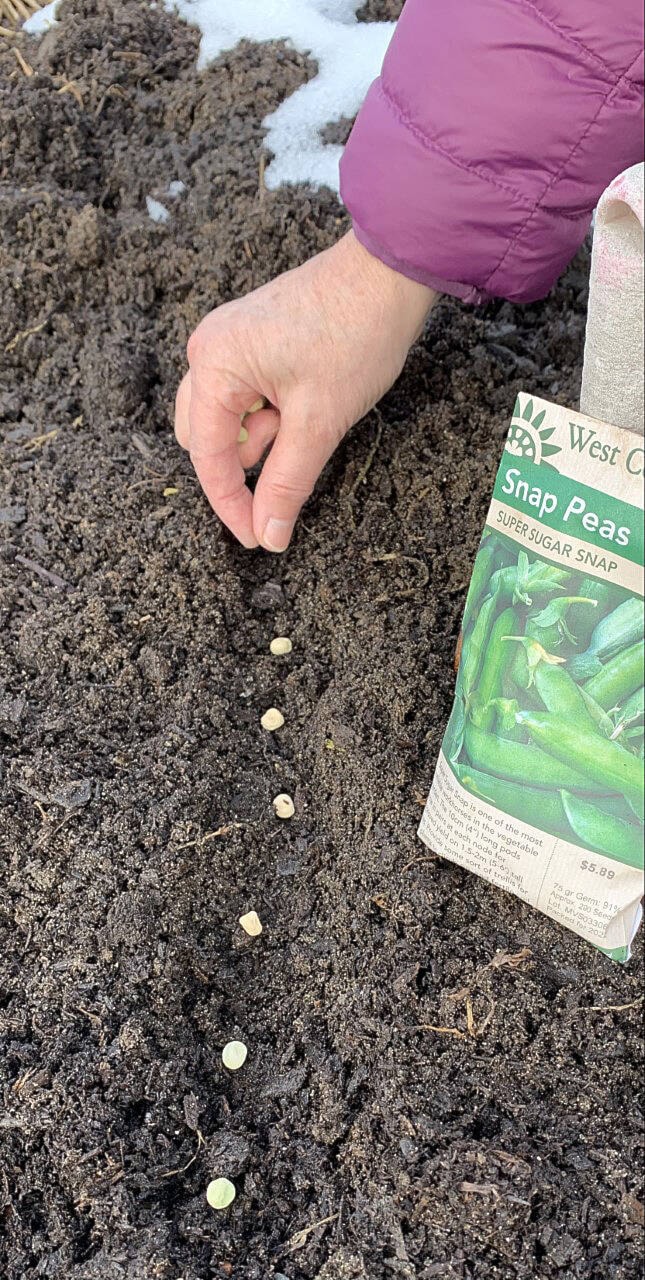By Marion Waters
As soon as the weather starts warming up, gardening tasks seem to multiply overnight. If you are a beginner or have a sizeable garden like I do, this is when it gets a bit overwhelming. So, take a break and lean on your shovel; give yourself time to think and plan.
Garden-wise, I am not a natural planner. I like to be free-spirited, creative, spontaneous. But as fun as that sounds, the results don’t always measure up to my dreams. I have learned the hard way to follow more tried-and-true approaches (at least most of the time). Every year I sketch out a plan for my vegetable garden and I highly recommend this practice. Use garden planning software, or grid paper, or the back of a napkin – just keep a record of what you planted where. Because one way to get the most out of your vegetable garden is to practice need crop rotation.
This may sound like something only farmers do but you can adjust the techniques to use in your home garden. The reasons are the same; certain vegetables, like corn and squashes, are heavy nutrient users. Others, like beans and peas are “nitrogen fixers” and actually improve the soil. If you plant corn in the same place year after year, the soil will become depleted of certain nutrients. Adding amendments and feeding with fertilizers can help restore the balance but why not use the natural benefits of crop rotation by planting the heavy feeders in areas where nitrogen fixers grew the previous year?
The other important reason for crop rotation is pest and disease control. Root vegetables such as carrots, parsnips, and potatoes are susceptible to root pests such as carrot rust fly larvae. Planting carrots repeatedly in the same place will guarantee wormy carrots. However, moving them to a new spot in the garden will give them a chance to grow where root pests have not established themselves. By the time you get around to planting carrots back in the original place they started, the pests will (hopefully!) have died out from lack of food.
A three-to-five-year crop rotation is recommended. Even if your vegetable garden is tiny (or even if you are growing food in pots) you can practice some form of crop rotation. One way is to divide your growing space into five areas and plant as follows:
Area 1 broccoli, cabbage, kale, Brussels sprouts, cauliflower, radishes, rutabagas, turnips
Area 2 carrots, parsnips, parsley, celery, dill, cilantro
Area 3 tomatoes, potatoes, peppers, eggplants (corn, squashes)
Area 4 peas, beans
Area 5 onions, leeks, garlic, shallots
The following year, move each crop group to the next area (i.e.cabbage group to area 2; carrot group to area 3; tomato group to area 4; peas and beans to area 5; onion group to area 1). Crops such as beets, spinach, Swiss chard, corn, cucumbers, squashes, and lettuces have a lower risk of soil-borne pests. They can be tucked in wherever you have room. However, since corn and squashes are heavy feeders, it makes sense to put them in with the tomatoes so they are followed by nitrogen-fixing legumes the next year. It takes a lot of shovel-leaning to work it all out.
If it all seems way too complicated and sends you back to being a free spirt, believe me I understand! So here is crop rotation simplified: don’t plant root vegetables or potatoes or corn or tomatoes in the same place year after year. Even simpler: don’t plant the same thing in the same place as you did last year.
But do remember to draw out that plan because you might find yourself leaning on your shovel again, wondering if it was last year you planted peas next to the fence – or the year before?
Marion Waters is a retired educator. She is a writer, soap-maker, and lifelong avid gardener and a Master Gardener in Traiing. She lives on a hobby farm in Black Creek.
References:
https://www.growveg.com/guides/crop-rotation-for-growing-vegetables/
Bennet, J. (1982). Digging and Delving. The Harrowsmith Northern Gardener (1982). Camden House.
Gilkeson, L. (2013). Pest Management Basics. West Coast Gardening: Natural Insect, Weed & Disease Control. Self-Published.
http://www.lindagilkeson.ca/
https://www.westcoastseeds.com/
